Overview
Without introspection and behavioral change, technology may not prevent the collapse of our ecosystem. Acting on this belief, we designed Your Turn to encourage people to adopt environmentally conscious behavior.
Project involvement: Prototyping and visual design
Collaborator: Directive Apps
Collaborator: Directive Apps
The Problem
There is plenty of material on how to lead a green lifestyle. Yet, people tend not to change their lifestyles and old habits quickly. According to health behavior theory, people are more likely to develop healthy habits if they receive the following information and resources:
1. Potential positive aspects of a health action
2. Potential negative aspects of a health action
3. The seriousness of a condition or the consequences of leaving an issue unaddressed
4. The belief that one can achieve the behavior required to execute the outcome
5. Tools and resources that make new behaviors easier to perform
2. Potential negative aspects of a health action
3. The seriousness of a condition or the consequences of leaving an issue unaddressed
4. The belief that one can achieve the behavior required to execute the outcome
5. Tools and resources that make new behaviors easier to perform
Wilkinson, J., Strickling, K., Payne, H., Jensen, K., & West, J. (2016). Evaluation of diet-related infographics on Pinterest for use of behavior change theories: a content analysis. JMIR Mhealth Uhealth, 4(4), 1-11.
We believe that getting people to adopt environmentally conscious behavior is a lot like encouraging them to develop healthy habits. Encouraging behavioral changes in people by making such changes less taxing was our biggest challenge.
The High-Level Goals
Send weekly prompts or challenges, encouraging people to adopt environmentally conscious behavior.
Make behavioral changes less taxing.
Utilize a non-coercive way of encouraging people to change their behavior. For example, one of the prompts challenges the users to wipe instead of washing their vehicles. If the users do not feel comfortable with performing the task mentioned above, they can choose another task from the list. The idea is to help people find their comfort zones while adopting environmentally conscious behavior.
The Target Audience
After conducting a competitor analysis, we determined that the existing apps (JouleBug, Today) targeted a western audience and were challenging to use. Today recommended that people hang their clothes outside to dry instead of using dryers, which saves electricity. This recommendation is moot in the Indian context because many Indians already hang their clothes outside to dry. We wanted to design Your Turn for the developing world, specifically for India.
Process and Insights
Using low-fidelity wireframes, we conducted qualitative research with five target audience members. We asked the users to complete a challenge using the wireframes. We encouraged the participants to think out loud as they performed the task.
Preliminary wire-frames

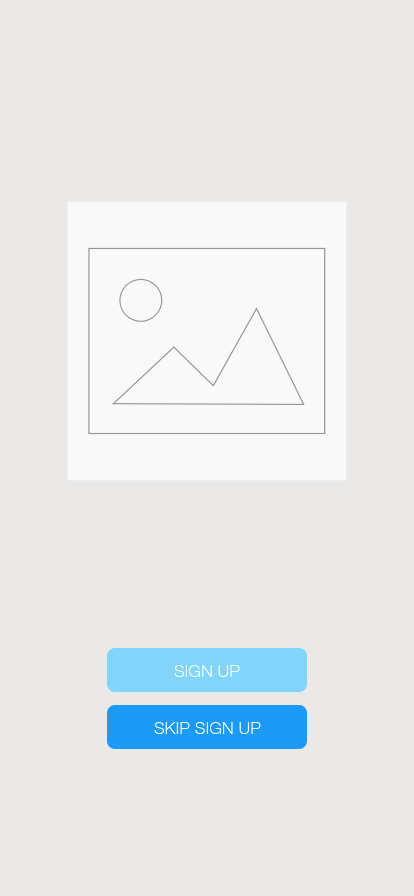
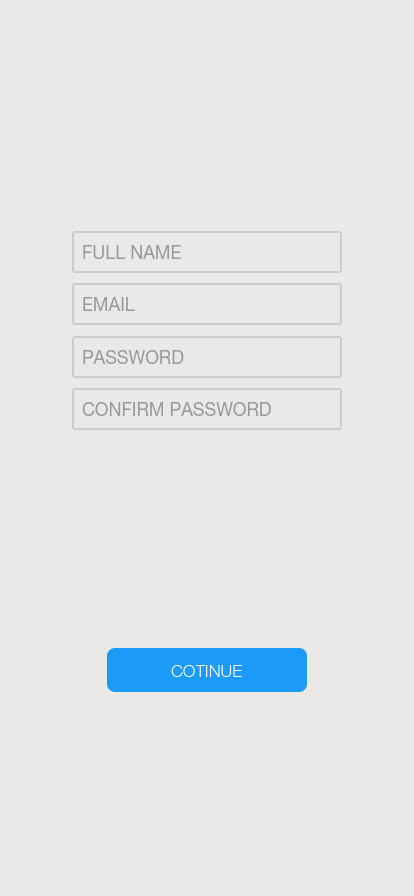






Wire-frame characteristics
1. Users shared their experiences via social media after completing a task
2. The challenges did not appear in any specific order
3. The screens did not provide any information about the positive environmental impact of completing a challenge
2. The challenges did not appear in any specific order
3. The screens did not provide any information about the positive environmental impact of completing a challenge
What did we learn?
1. Compelling users to share their experiences made the tasks tedious.
2. The participants appeared excited about using the app if the tasks were organized into multiple levels of difficulty.
3. The participants wanted to know about the positive and negative environmental impact of their actions.
2. The participants appeared excited about using the app if the tasks were organized into multiple levels of difficulty.
3. The participants wanted to know about the positive and negative environmental impact of their actions.
Modifications
We modified the wire-frames in the following manner:
1. The revised wire-frames did not compel people to share their experiences.
2. We organized the tasks into four levels, but allowed people to jump freely from one level to another.
3. Provided information about the environmental impact of performing a specific task.
1. The revised wire-frames did not compel people to share their experiences.
2. We organized the tasks into four levels, but allowed people to jump freely from one level to another.
3. Provided information about the environmental impact of performing a specific task.
Cognitive walk-through (complete the current challenge)
Low-fidelity wire-frames (complete the current challenge)


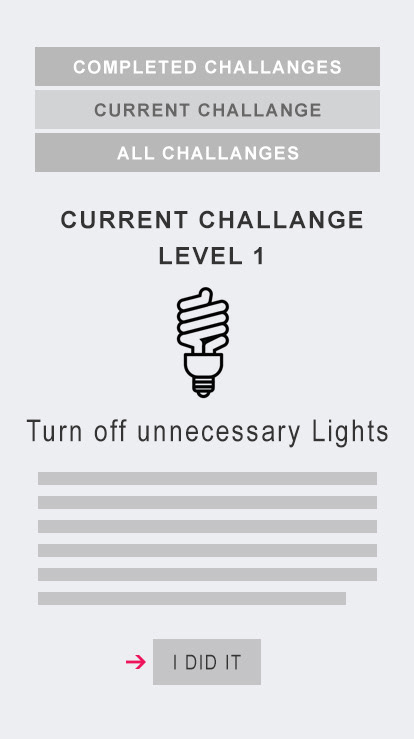
Cognitive walk-through (complete a level 1 challenge)
Low-fidelity wire-frames (complete a level 1 challenge)



Visual Design
Visual design alternatives (landing page)
For the landing screen, we favored the right-most design because it contained a shorter yet meaningful introduction to the app. Additionally, we streamlined the sign-up process by allowing first-time users to create new accounts.
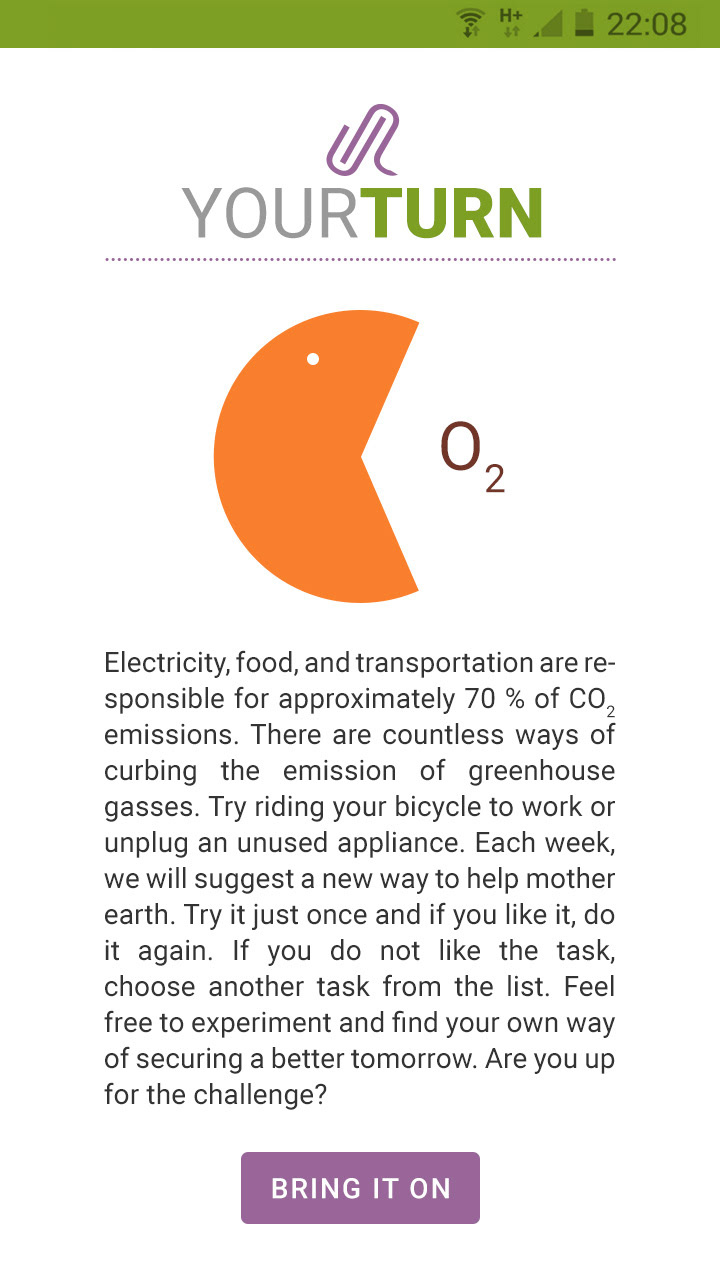


We chose the second logo because the graphic on the left resembled an existing trademark. Also, the final logo did a better job of representing the app by symbolizing the breaking out of a cycle or an unhealthy habit.
High-fidelity wire-frames (complete the current challenge)



High-fidelity wire-frames (complete a level 1 challenge)


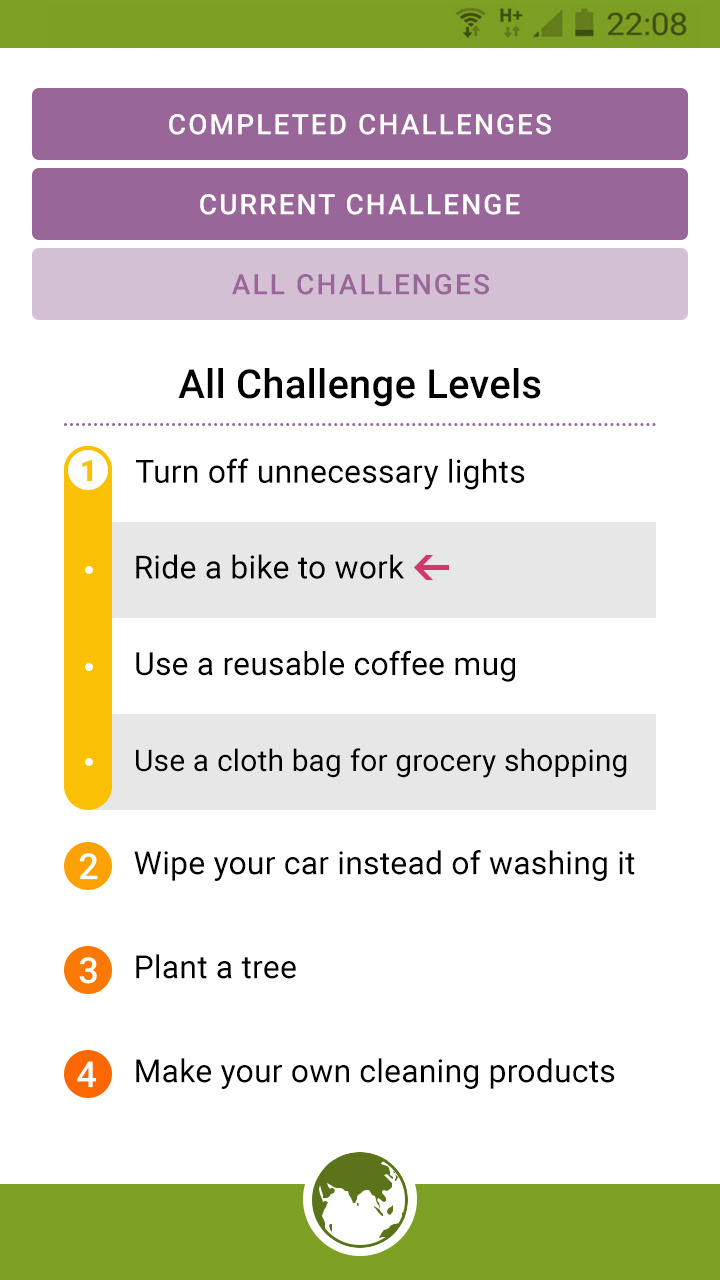
Interface measurements

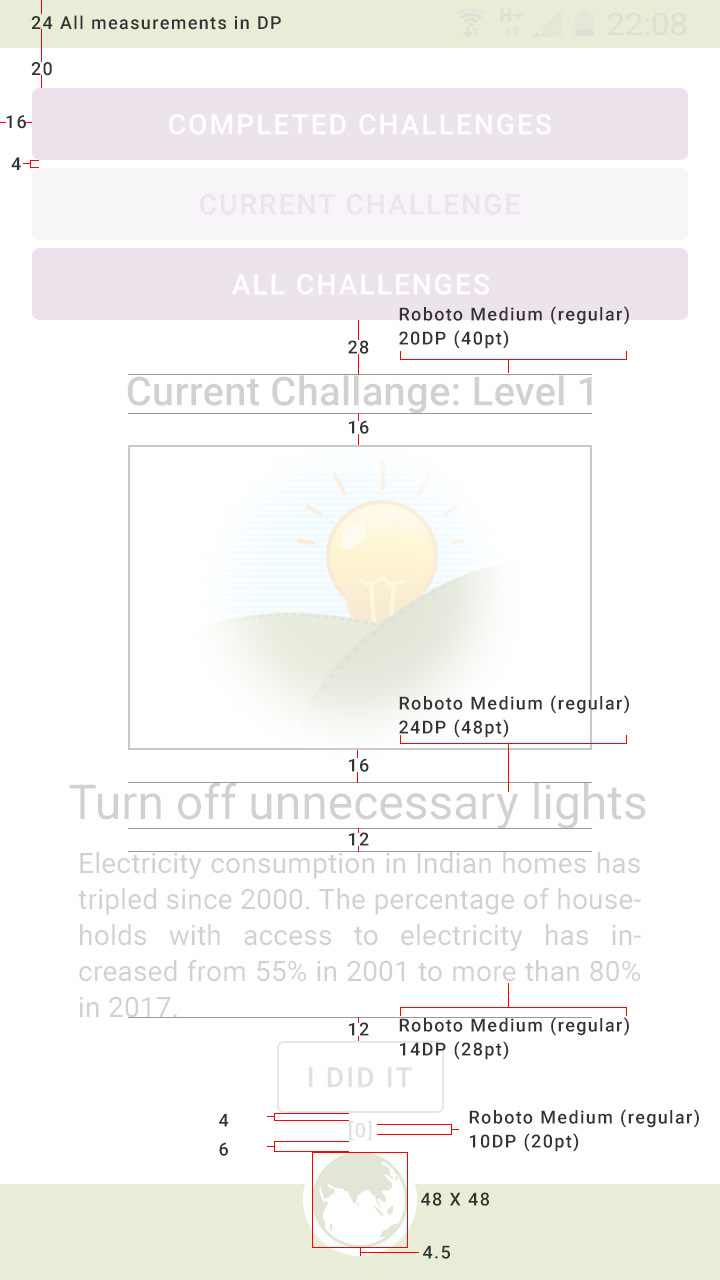

Reflection
Moving forward, we need to develop a better way of evaluating the effectiveness of behavior modification tools. When a person taps on a button, indicating that they have completed a specific task, it does not mean that they have formed a new habit. As we refine the current app, we would like to develop ways of monitoring habit formation.
